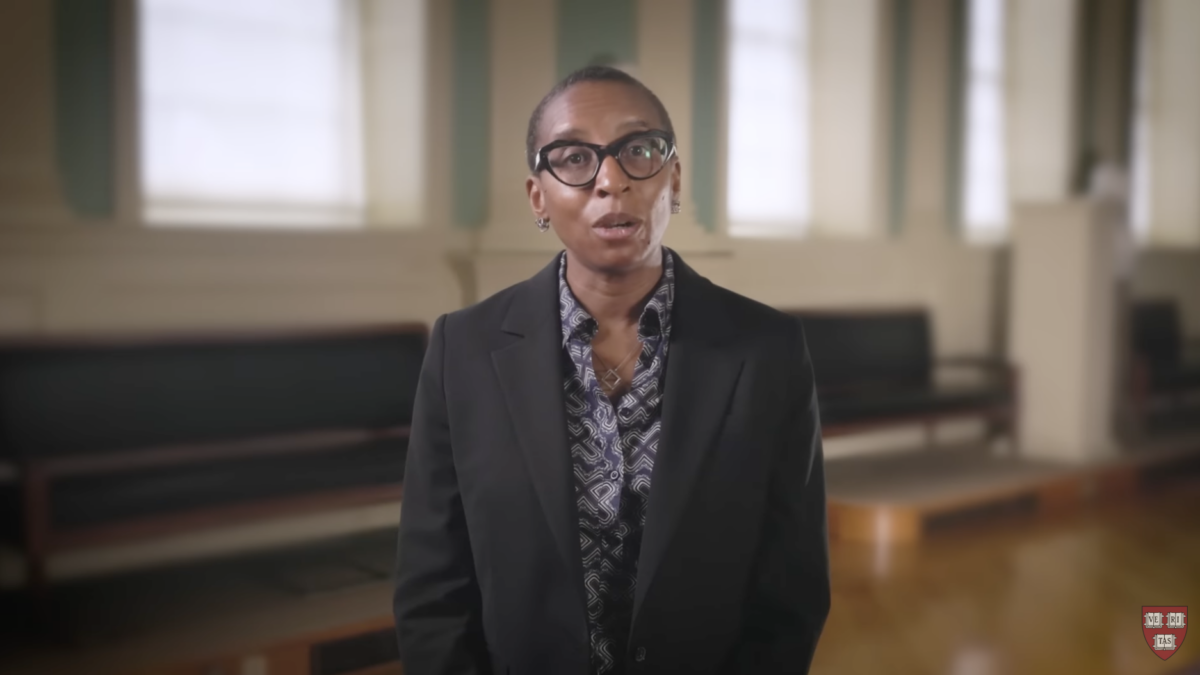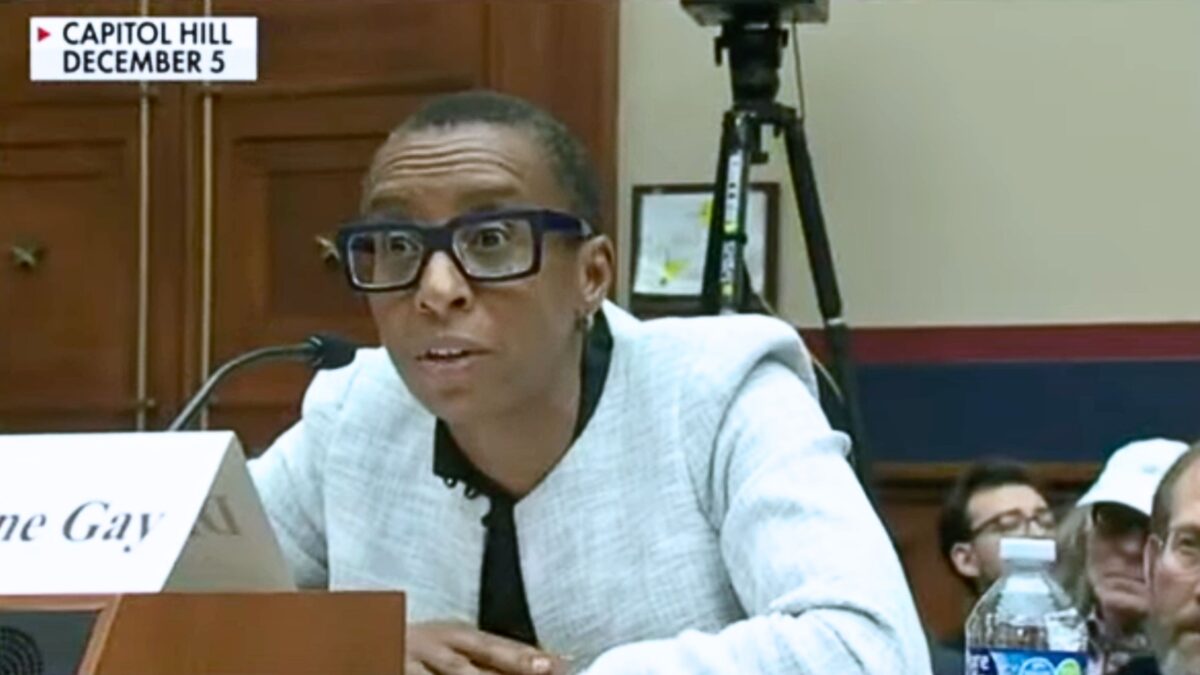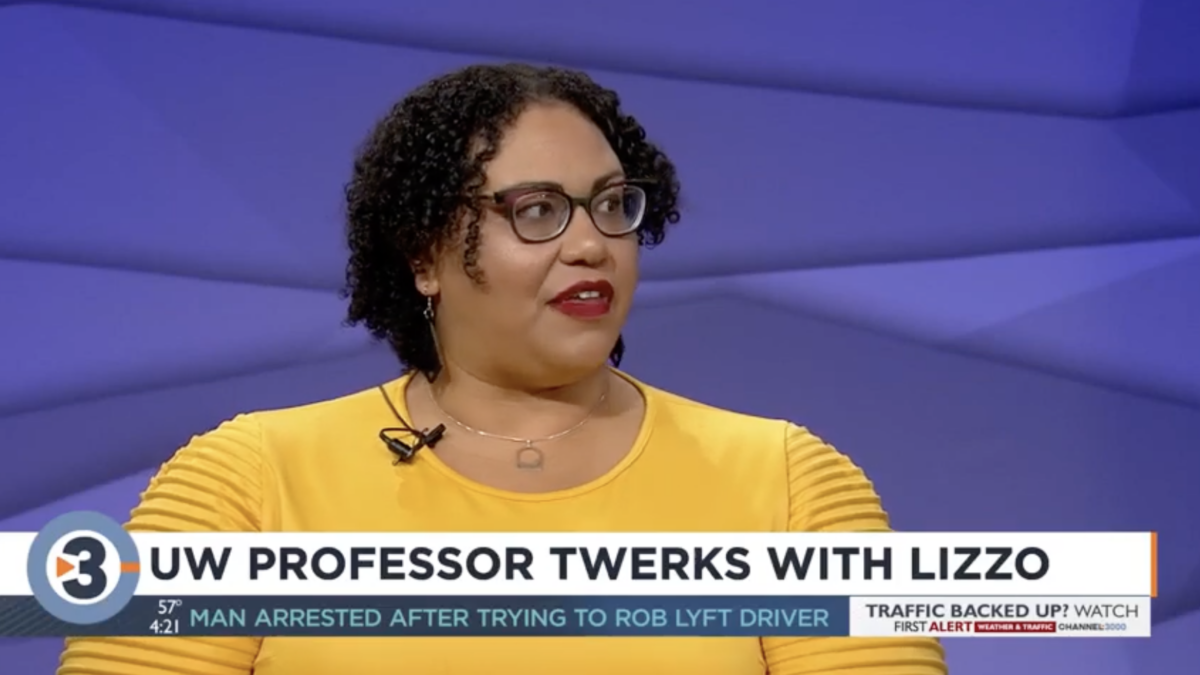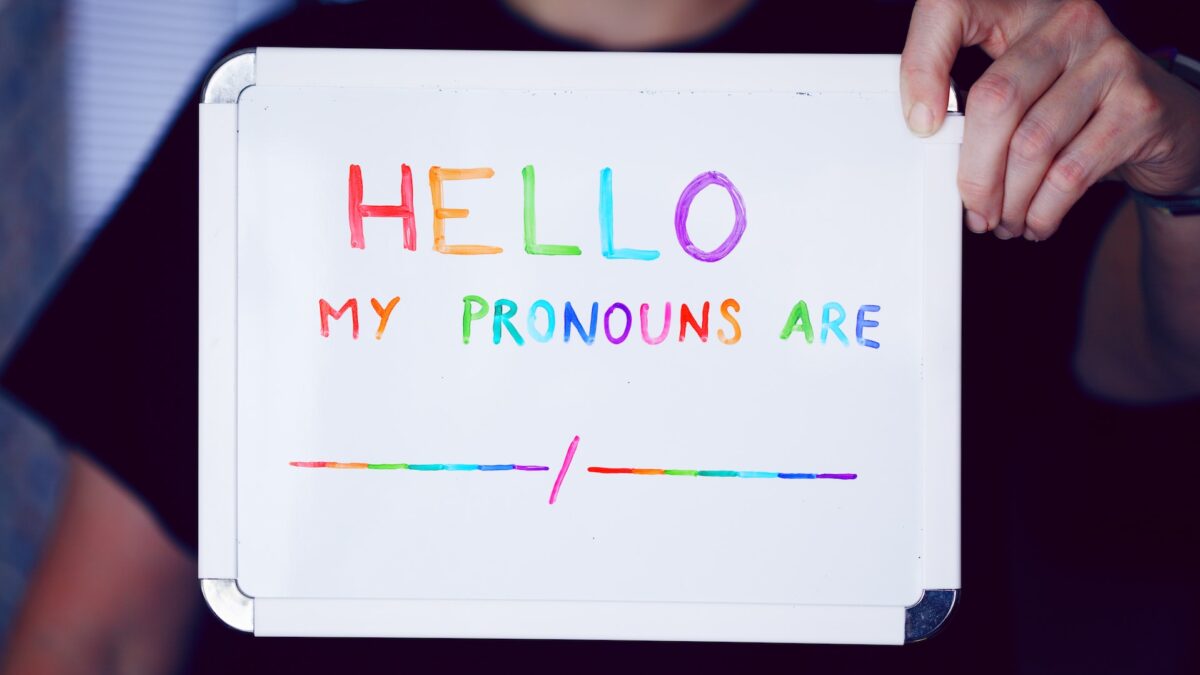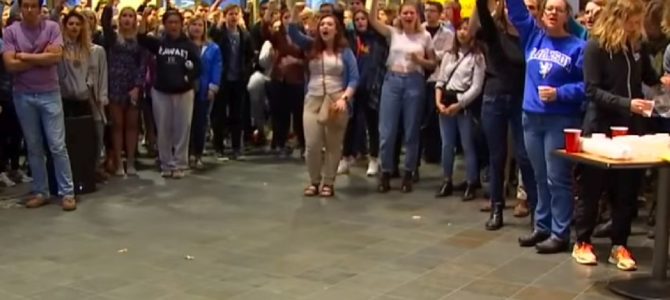
NORTHFIELD, Minn.— It was a vile, racist note. It used the n-word, threatened a student, sparked a campus takeover, and generated national headlines. It was also a hoax.
The note consumed St. Olaf College, a private Lutheran school with about 3,100 students. Located in a rural Minnesota town with the motto “Cows, Colleges and Contentment,” the note prompted a mob of students to take over the campus. Such was the fury displayed the night of Saturday, April 29. As word of the racist note spread via social media, irate students blocked the entrances to campus buildings. One student who tried to break through was allegedly punched.
“The students have taken over the campus like a coup,” Kathryn Hinderaker, vice president of the College Republicans, said at the time. Another group allegedly commandeered the library’s PA system to rally troops, pushing aside the hapless aide who tried to stop them. Signs hung around campus declared “I’m sick of white tears” and “F-ck your white complacency.” No one dared take them down, a student said.
Some protesters even made their way to a student show of “Much Ado About Nothing” and interrupted the performance. The crusaders, in their quest to demand accountability, then clogged the student commons to capacity, taking turns on the mic to bemoan how, as one student put it, “St. Olaf is an institution that is racist, that has tokenized its students of color.”
Administrators Rush to Apologize
The chaos drew college President David Anderson to the scene. His tone was so conciliatory at times that if he had a tail it might have been tucked between his legs: “I am not saying there aren’t instances of racism that happened at the college, and I am not even saying that there aren’t perhaps institutional elements of racism that we need to identify and correct,” he said, adding, “I don’t think the focus and thrust and energy of the institution is racist.”
Like a parent trying to reason with petulant teenagers, Anderson asked his malcontent students to have patience and understanding while fielding accusations and condescension. When he did defend his school, he was often booed and jeered. Anderson felt their pain. He pledged more diversity hiring. Unsatisfied, the crowd pressed on: “Do you know my name?” “What is the definition of diversity?” “What are you going to do about racism?”
Late into the night the protest continued. Anderson stayed for an hour fielding demanding questions. At times he stood his ground, but student accusations continued to fly. Many students occupying the commons slept there. The administration officially canceled classes for the upcoming Monday to facilitate more student grievances.
The shutdown occurred “so that we may have time for faculty, students, and staff to continue the discussions about racism and diversity on our campus,” Bruce King, assistant to the president for institutional diversity, said in an email to the campus community. Two weeks later, an investigation determined the note that launched it all was a hoax. Many speculate the black student who found it had created it.
This Grievance Formula Works
The furor at St. Olaf College is a microcosm of a formula that has played out at many U.S. higher education institutions in recent years. A racist incident—sometimes a hoax, other times not—drives self-described marginalized students into a fevered pitch, demanding action.
It started with the infamous Yale University and University of Missouri demonstrations in fall 2015 by Black Lives Matter protesters, efforts that prompted administrators at both schools to resign. Different iterations of that activist movement continue, largely because it works. Once people lodge complaints of institutional racism, administrations often cave to student demands, providing everything from segregated spaces to promises of hiring more faculty of color.
For example, a group of black students this spring at the University of California-Santa Cruz took over a building on campus, claiming institutionalized racism. Within days, the president of the university conceded to the students’ demands, which included painting the outside of the Rosa Parks African American Themed House the “Pan-Afrikan colors” of red, green, and black, and forcing all incoming students to complete diversity competency training.
Student activists at both the University of California-Los Angeles and the University of Chicago, claiming racism, have lodged lists of demands against administrators. The chaos at St. Olaf shows even small campuses in rural America are not immune.
The Note that Launched a Thousand Howls
The note that launched hundreds of student protesters at St. Olaf stated: “I am so glad that you are leaving soon. One less [n-word] that this school has to deal with. You have spoken up too much. You will change nothing. Shut up or I will shut you up.”
It was “found” April 29 by St. Olaf student Samantha Wells, following others discovered on campus recently expressing similar sentiments. Demonstrators used them as proof that the 131-year-old St. Olaf College, founded by pioneer pastors, is racist.
Not everyone agrees. Sophomore Andrew Morales dissents. “The truth is this college is not racist. This college is not racist,” he said. Even before the typewritten note was determined to be a hoax, Morales felt it phony. The other notes left for black students were handwritten and shorter, he pointed out. But a progressive student chastised Morales for even suggesting it was fake. The chaos that controlled the campus the night of April 29 seemed inexorable.
The Washington Post described the events as a “peaceful protest.” Some sources dispute that, citing angry students, the blockades, and more.
“It’s a very hostile, very angry campus right now — yelling, swearing, disrupting,” Hinderaker said at the time. Another student, seeking anonymity to protect her safety, pointed out that administrators allowed the commons area “to become a bulletin board of complaints against white people. No action has been taken to remove the signs, and no students dare to touch them since there are newly-installed cameras everywhere.”
A Fake Note as Leverage for Social Power
It was a demonstration fueled by a note with an n-word, but as the movement galvanized, it strayed, casting a wider net of discontent and demands. “They are now using [the note] to argue our entire institution is racist inherently, and I disagree with that. And the way they have gone about it, yelling at our president, demanding things, some of it is valid but they have gone about it in a very terrible way,” Hinderaker said.
Morales felt the movement pushed a left-wing agenda. He pointed to a lengthy list of demands from a student group called “The Collective for Change on the Hill.” Demands included mandatory diversity training, more programs for students of color, and additional resources for recruiting students of color. They also extended past racial issues. Other requests called for more gender-neutral housing and that St. Olaf acknowledge it was built on “occupied Dakota land.”
Another target was alumnus Arne Christenson, managing director of policy and politics of the American Israel Public Affairs Committee. Students wanted him removed from a campus advisory board because of his “political views and values as a Christian Zionist.”
These wide-ranging demands upset some conservative students at St. Olaf, who saw the demonstrators unfairly targeting the administration and demanding things that didn’t connect with the racial incidents. But conservative students dared not say such things in public.
“I don’t like that it’s gone from a single issue to this kind of catch all demands that are very sweeping,” one student observed, requesting anonymity for his safety.
“The crux of the movement is ‘you’re either with us or against us. You’re either for fighting racism or you’re against it.’ But in reality, obviously everybody here is against racism,” Morales said. Another student added it’s a for-us-or-against-us mentality. Their remarks came at a university where conservatives say they have been “violently threatened” by peers, and labeled “racists” and “bigots.”
How the Hoax Came to Light
Nearly two weeks after the uproar on May 10, St. Olaf deemed the note that started it all was a hoax. In an email to students, Anderson told students an investigation found it wasn’t a “genuine threat.” A few hours later, he sent a second email. This time he was more direct: “We learned from the author’s confession that the note was fabricated. It was apparently a strategy to draw attention to concerns about the campus climate,” he wrote.
His email didn’t name the note’s author, citing federal student privacy law. But around the same time Anderson sent his announcements, the student who found the note, Wells, posted an ominous message on Facebook: “It looks like something made its way back to me in the investigation. I will be saying it was a hoax. I don’t care. There is nothing more that I can do. I just wanted to give y’all the heads up.”
She later deleted the message and recanted. “It was a reaction to something said this morning and my wanting for all of this to end. I did not have to admit anything because there is nothing to admit,” she said in an email to The College Fix.
It may not have needed a phalanx of campus authorities and law enforcement to determine the hoax, however. Emails showed that as the protests unraveled April 29, Wells told others she didn’t want her case investigated. Her comments were included in an email chain that began with a subject line “TRACK DOWN RACIST BEHIND THREATS” and discussed how the college might use its technology to find the perpetrator.
“I do not want my case to be investigated,” Wells stated. “Not because I do not want to let this person go but because I am very stressed and I think that efforts could be utilized elsewhere. That said, I do want them to investigate both previous and possible later cases.”
“Also, this message could have been printed off school grounds and could have been printed days, months, or years ago. I mean heck, I printed off a form today for work (that I didn’t get to turn in whoops) right before I went to my car so I too could be a suspect but even I am not that extra,” she added.
But It’s Not Over
Final exams have concluded at St. Olaf. Students have headed home for the summer. But fallout continues. As part of an agreement reached with The Collective for Change on the Hill, administrators have set up a task force to review their demands.
Christenson is safe, for now. Anderson rejected the call for his ouster. Meanwhile, an investigation into the other alleged racial incidents continues. Anderson has previously said he believes they are the work of a single individual or a small group. Amid the hoax, The Collective condemned the fabricated note but doubled down on its goals.
“This ‘not genuine’ incident does not invalidate the experiences of others and it does not invalidate institutional racism,” it said in a statement. “The Collective stands unified in challenging institutional racism and in seeking institutional change.”
The group says it’s moving away from those alleged racist incidents. Late last month, it released a document titled “Racism and Change on The Hill, 1874-2017.” “This paper is part of our attempt to shift the attention from individual perpetrators of hate crimes and racism to Institutional problems,’’ it said. Not even a hoax will stop them.


